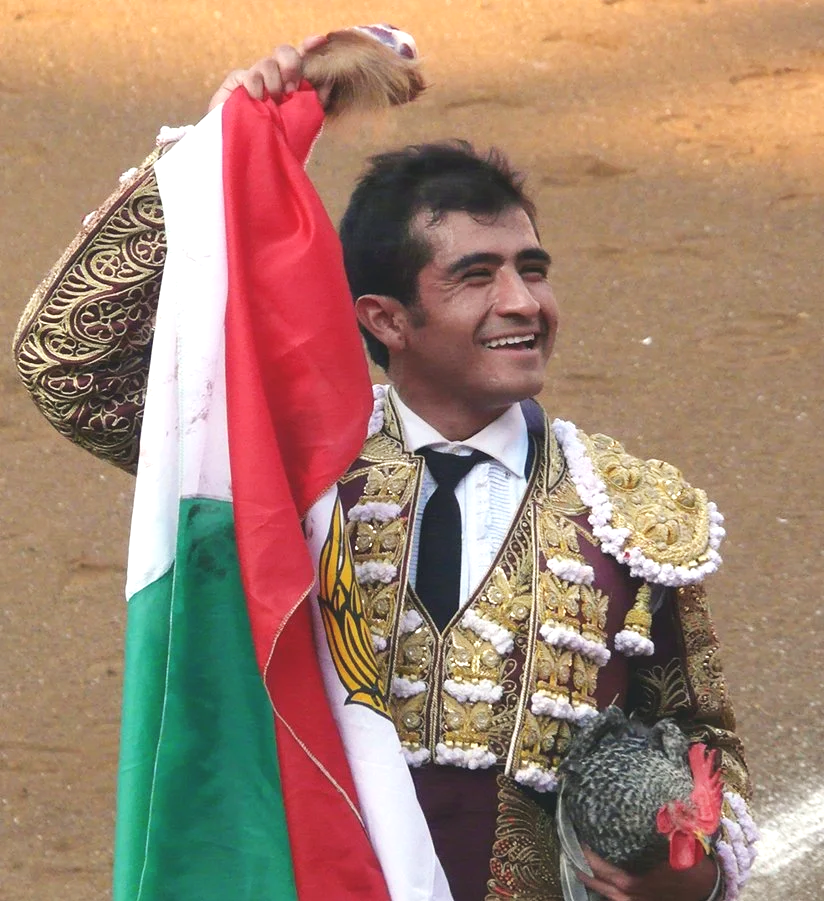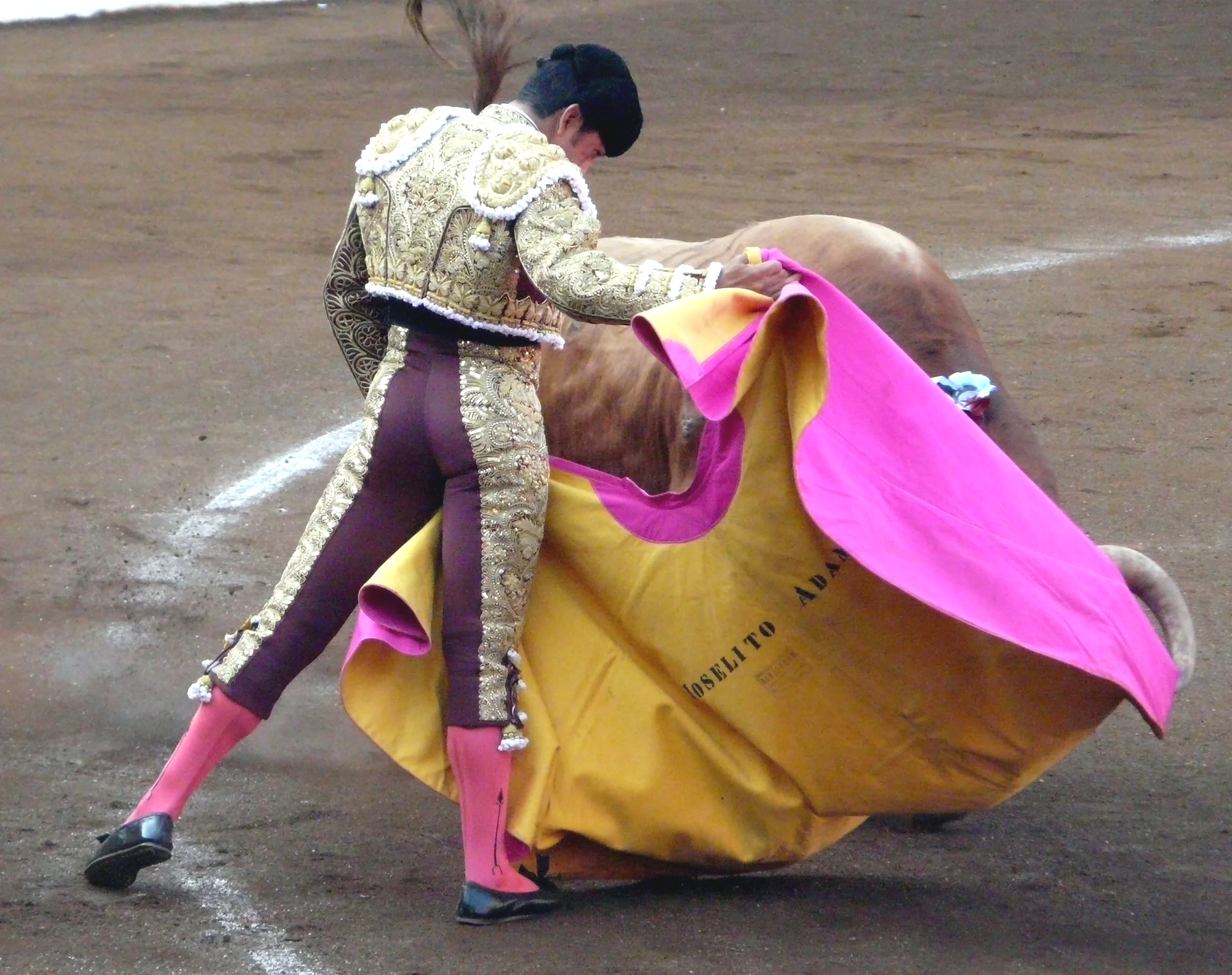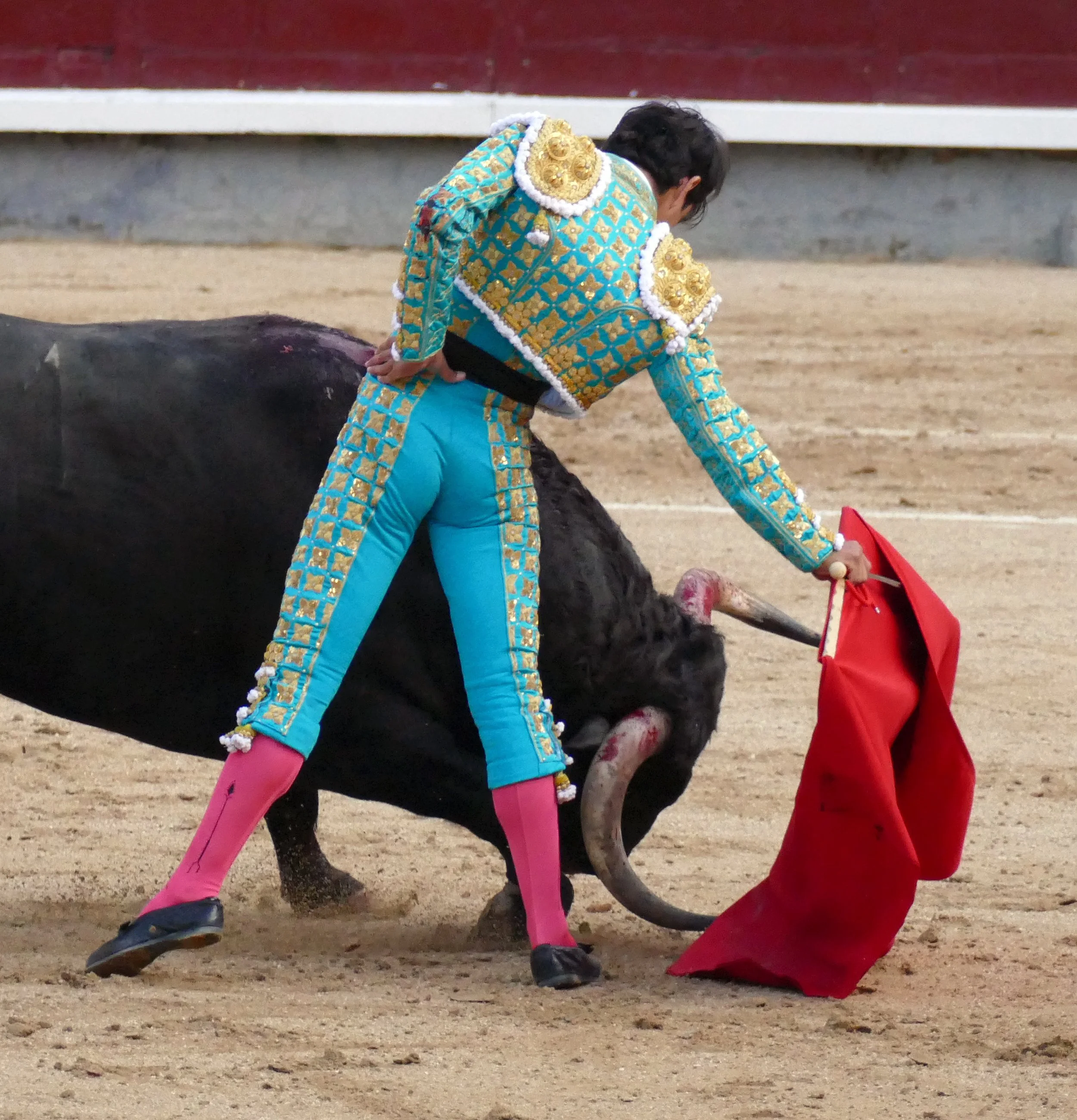Joselito Adame’s (temporary?) farewell
Joselito Adame always was an international torero. The Mexican debuted with picadors and took his alternativa in France. And now he has fought what he says is his last corrida in Spain, during Huesca’s feria rather than in Mexico.
The eldest of three brothers taking the taurine path, Joselito first appeared in a traje de luces as a becerrista aged 10. He was one of the first of today’s Mexican toreros to spend significant parts of his novillero years in Europe, joining Madrid’s Escuela de Tauromaquia ‘Marcial Lalanda’ in 2004.
I first saw him perform in the ring in the week after his Arles alternativa in 2007. He appeared in Nîmes alongside Denis Loré and José Tomás and the 18-year-old emerged as the afternoon’s surprise triunfador, convincing the spectators with varied capework, close banderillas, excellent series of linked muletazos and two superb estocadas, winning two ears from each bull.
Joselito placing banderillas and in a natural (Nîmes, 2007)
“Joselito Adame promises to bring a breath of fresh air to the corrida in France and Spain,” I wrote at the time, although things didn’t quite work out like that.
In Mexico before long, Joselito had succeed Eulalio López Zotoluco as the country’s No.1 taurine attraction. Now, he’s among the top five Mexican toreros in terms of numbers of corridas fought in Latin America, the others being Rodolfo Gaona, Fermín Espinosa Armillita, Luis Freg and Carlos Arruza. He’s appeared in his home city of Aguascalientes 46 times, cutting 68 ears and a tail; in Plaza México 29 times, winning 35 ears; and in Guadalajara on 27 occasions, earning 30 ears and two tails.
Like any figura, Adame has also received criticism over the years; he knows the tricks of the trade and sometimes deployed them. While he became the leading matador in Mexico, European empresas failed to give him the recognition he deserved when drawing up their carteles. For some years, he’d perform strongly in Sevilla and Madrid, but not gain many contracts elsewhere. His biggest European season was 2014 – three years after his Madrid confirmación and two years after his debut in La Maestranza – with 30 corridas, but by 2018, his corrida numbers had dropped to three and he made a decision to cut short his 2019 season after just two events. In recent years, he has tended to take part in Madrid’s San Isidro feria (he has appeared 18 times in Las Ventas - more than any other Mexican torero) followed by a few festejos in Spain and France over the course of the summer.
Verónica (Santander, 2014)
A thinking and resourceful torero, he never let this spectator down, even when he failed to cut ears. In Santander in 2017, the Mexican impressed me once again with a splendid performance with a murube of Castillejo de Huebra. He met the animal with some fine veronicas and a beautiful media veronica and followed these lances with a quite of chicuelinas and a revolera and desplante. The faena, dedicated to the public, was brilliant from start to finish, the muletazos silken, the stance relaxed, with a movement of the exit leg in between passes and little flourishes such as a molinete or farol. A terrific estocada led to no less than seven attempts to descabellar and the loss of a certain two ears.
Joselito in a derechazo (Madrid, 2022)
My last viewing of him was three years ago during Madrid’s Feria de San Isidro. It was another afternoon in which no trophies were won, Joselito facing bulls of Chamaco and Araúz de Robles. Although the Mexican was excellent again that day, it was an afternoon that could have so nearly ended in tragedy. Beginning his faena to his second bull, Joselito positioned himself by the barrera and took the animal from a distance for an estatuario. However, the bull failed to follow the cloth cleanly and, charging at full pelt, the side of its left horn crashed into one of Adame’s legs, sending the matador up into the air, Joselito landing badly on the base of his neck. After taking time to recover, Joselito delivered a marvellous faena, producing fine, linked series on either horn, often crossing the line of charge at the tandas’ commencement. A pinchazo and estocada lost him an ear. With his earlier Chamaco bull, Joselito produced a short but intense faena mainly on the right hand, linking and turning the animal superbly, and may even have won an ear if not for his swordwork.
It is not entirely clear whether Joselito’s retirement is definitive. He has not cut the coleta and his farewell message to the taurine world left things somewhat open, saying he had decided “to stop bullfighting, to pause my professional life. It is something I’ve been thinking about for several months; it has been very difficult to make this decision. However, at the stage at which I find myself, I feel the need to pause, to leave the torero at this point and to focus on the man […] Time, calmness, and a different perspective to face this new way of life will guide my future decisions, both personally and professionally.”
It’s also unclear as to what extent bullfighting’s current precarious situation in Mexico has played a part in the matador’s thinking. He has been a leading critic of the proposals to alter the nature of bullfighting in Mexico City - proposals that could, in time, spread across Mexico. In March this year, together with an associate, he bought the ganadería La Guadiana and the ganadería’s ranch in Zacatecas. It was announced that the ganadería’s new name will be La Asunción and the animals will carry the brand of San Fermín that once belonged to the Armillita family.
Joselito killing (Madrid, 2015)





